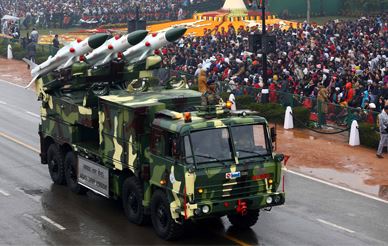The Indian army and air force are seeking more than 70 counter-UAS systems as part of the Ministry of Defence’s ’ Technology Perspective and Capability Roadmap – 2018 (TPCR-2018). The counter UAS systems should be “designed to disrupt and neutralize RPAs engaged in hostile airborne surveillance or any other activities. It (the system) should have combination of electronic/scanning radar target detection, electro-optical (EO) tracking/ classification and directional RF inhibition capability….should be able to remotely detect all RPAs from micro to MALE. It should be operated in military as well other RF Bands.
- Detection range > 40 Kms,
- EOTS range > 12 Kms
- RF inhibition range > 7 Kms.
The forces are also seeking tactical high energy laser systems – less than five in the first phase of acquisition and more than 12 in the second phase. The requirement is for:
“A HMV based LASER weapon system to cause physical damage/destruction to EW systems, communication systems and non communication systems/radars and their antennas. (b) Should be also effective against microwave towers, cellular towers, and cables. (c) Weapon system should be capable of an effective range of 6-8km. (d) Should be capable against small aerial targets/objects. Phase II (a) Should be effective against soft skinned vehicles and troops. (b) Range should be upto 20 KM and beyond. Should be capable of anti satellite role from ground and aerial platform. Should be as effective in ground-to-ground role as for ground-to-air role. Should have gyrostabilised aiming and target locking capability.
India’s armed forces are also seeking a high power electromagnetic weapon system – less than five in phase one and more than 15 in phase two. It should be an HMV weapon“effective against avionics & radars of aircrafts & RPAs.”




